*This post doesn't display fully in the email, so be sure to read it in the Substack app or on your desktop! I highly recommend downloading the app for the complete experience.*
“Always a sign of status—orchids have a reputation as the divas of the horticulture world—they came into their own in the louche 1970s, replacing the earthy, humble daisy, the symbol of flower power”
Hello!
I hope you're all doing well. With daylight savings this weekend, spring is almost here which is one of my favorite seasons. To celebrate the arrival of the new season, I wanted to share another installment from my somewhat inconsistent series on here, where I focus on a single type of flower. If you're interested, feel free to check out my previous posts on tulips and irises. This time, as you’ve probably guessed from the title, I’m diving into the very interesting world of the orchid.
Orchids are a kinda dark
On the encyclopedia, Britannica the word orchid is derived from the Greek word (orchis) for testicle because of the shape of the root tubers in some species of the genus Orchis. 1
While doing research on orchids, I learned about Orchidelirium, also called orchid fever, which is similar to the Dutch’s Tulip Fever. Orchidelirium took place in Victorian England during the 19th century. The wealthy went mad over collecting and discovering these rare orchids. Orchid hunters were employed to track down exotic varieties in the wild and bring them to collectors, keen to display them in ornate, private greenhouses.
Okay, so I did a deep dive on orchid hunters, and wow, it was weird and gruesome. In The Orchid Thief by Susan Orlean, she talks about a British orchid hunter in New Guinea who discovered a new kind of orchid growing in a cemetery. In his journey to collect rare flowers, he dug up graves without permission, disturbing the resting places of the dead. To make amends for this desecration, he allegedly gave the people of the nearby town a few glass beads (?!)
Another orchid hunter sent home plants that were still attached to human remains specifically shin bones and ribs and another hunter reportedly brought back an orchid growing from a human skull. These finds were sold at auctions, including one at Protheroe’s of London, and sparked a public fascination with the darker side of orchid hunting. 2
In 1901 eight orchid hunters went on an expedition to the Philippines. Within a month, one was eaten by a tiger, another was drenched with oil and burned alive, five vanished and were never seen again, and one walked out of the forest with 7,000 orchid specimens. 3
Being an orchid hunter has always meant pursuing beautiful things in terrible places. 4
Orchids got everyone obsessed



Orchids have such a distinct shape and appearance that they're impossible to miss especially when watching movies. For the longest time, I noticed that orchids were so prevalent in many 1970s films, particularly in scenes set in modern, sleek and glamorous city offices or chic loft homes where there seemed to be orgies 24/7. There’s something about that flower that just fits the vibe of those films I suppose. A lot of these movies have themes of excess, opulence, and sometimes hedonism. When writing this, it reminded me of designer Halston.
I read an article from Vogue published in 2016 titled Exploring Fashion’s Ongoing Love of Orchids, where they talked about American fashion designer Halston and his obsession with orchids, particularly white ones. In case you don’t want to read the entire article, what I learned from it was that his spare Olympic Tower offices were filled with them. Halson even hired a gardener to take care of the plants he grew in his greenhouse on top of his office rooftop.
Writer and biographer of Halston, Steven Gaines, has suggested his love for the flower came from his mentor designer, Charles James. Decorator, Jeffrey Bilhuber, told Vogue in 1998, “Orchids were treated like champagne, something very occasional and limited. But Halston made them seem like not a rarity but a necessity. They looked just amazing—sensuous without being romantic and floral without being flowery.”5
By the 1970s, micropropagation, also known as tissue culture, had emerged as a significant technological advancement in the horticulture industry. Micropropagation is used to reproduce almost all common potted plant species, including poinsettias, ferns, cactus, and carnivorous plants.
“Orchids have interested me more than almost anything in my life”


I stumbled upon an interview with Peter Wise, Halston's second orchid expert, and it was great to learn from someone who worked so closely with him and experienced firsthand his adoration for orchids. Here are some of my favorite excerpts from the interview:
“When a man falls in love with orchids, he'll do anything to possess the one he wants. It's like chasing a green-eyed woman or taking cocaine. . . it's a sort of madness”
- Proclaims an orchid hunter in Susan Orlean’s The Orchid Thief.
In a 1970 Vogue article, accompanied by Irving Penn’s iconic orchid portraits, Anthony West, the son of writer H.G. Wells, noted: “Most of the remarkable things orchids do are connected with sex. Orchids are, in fact, masters of reproductive techniques, having elevated their performances to a level of refinement and elegance few other flowers can match.”
Orchids as a Contradiction in Film
Adaptation and Secretary are two obvious films that use orchids as a symbol, but as I was writing this, I realized both were released in 2002. It was definitely a big year for orchids in cinema!
Adaptation (2002), directed by Spike Jonze, is a meta-cinematic investigation of creative paralysis, transformation, and obsession. Charlie Kaufman, who is played by Nicholas Cage, attempts to adapt Susan Orlean's The Orchid Thief into a screenplay while dealing with his own anxieties and existential dread. As Charlie explores the book's theme which is Orlean's obsession with the rare Ghost Orchid he finds himself caught up in a haze of truth and imagination, which is made worse by his more prosperous, easygoing twin brother, Donald.
I believe the rare Ghost Orchid embodies both the creative process and the difficult, often messy journey toward perfection. Orchids, to me, are a fascinating contradiction beautiful yet elusive, delicate yet resilient. This film captures that duality perfectly, reflecting the struggles Charlie faces in his pursuit of artistic and personal fulfillment.
I rewatched Secretary (2002) in December after feeling let down by Baby Girl, and it left me craving the strange weirdness of James Spader.
In Secretary, directed by Steven Shainberg, James Spader plays E. Edward Grey, a lawyer with his own set of issues. Struggling with what appears to be obsessive-compulsive disorder, he obsessively collects red markers, exercises to the point of exhaustion, and tends to his orchids with meticulous care. The film centers around the relationship between the very shy Lee Holloway, played by Maggie Gyllenhaal, and the domineering Mr. Grey. The themes of the film are an exploration of power dynamics, self-discovery, and the complexities of intimacy. Orchids, often linked to sensuality and desire, perfectly align with the unconventional aspects of Lee and Mr. Grey’s relationship. As I mentioned before, orchids are full of contradictions, and in Secretary, they symbolize the tension between fragility and strength just as Lee navigates the delicate balance between submission and empowerment in her evolving connection with Mr. Grey.
The opening scene of Pride and Prejudice (2005) shows Mr. Bennet holding an orchid. I’m no expert when it comes to identifying orchids, but a little quick research (thank you, Reddit) tells me it’s a paphiopedilum hjsinying. I also came across a funny little tidbit on IMDb under the movie’s "Goofs/Factual Errors" section that gave me a good laugh:
“Mr. Bennet first appears holding a plant, an orchid. Given this flower was still very rare in England when the book was written (mid 1790's) and the majority of known orchid plants were grown at Kew Gardens hot houses, the few specimens that were in public circulation were in the hands of the very wealthy. It is therefore unlikely that Mr Bennett would have access to this particular plant.” 6
In the video clip above is from the 1946 film The Big Sleep, General Sternwood asks Philip Marlowe if he likes orchids. Marlowe responds with a simple “No.” Sternwood then, almost disdainfully, describes orchids as “Nasty things. Their flesh is too much like the flesh of men. Their perfume has the rotten sweetness of corruption.”
"Choking the aged and the meek,
The weak
Hothouse baby in its crib,
The ghastly orchid
Hanging its hanging garden in the air."
Stanza taken from Fever 103º by Sylvia Plath, 1962I like how the Poetry Foundation analyzed these lines of the poem, Fever 103º by Sylvia Plath:
The imagery here is lacerating. With an effortless transposition of adjectives, (“hothouse” for baby and “ghastly” for orchid), Plath nails the sweaty, sleepless (and verboten) repulsion that this new mother feels for her infant: How horrible babies are! And beautiful! The nightmarish imagery morphs: smoke to scarf to knot to noose, infant to orchid to a jungly overgrown garden. The poem is a fever-smear, a dreamy nightmare, fully infecting us half by image and half by sound. 7
Read the entire poem here
Orchids in art, fashion and beauty
Narcissa Swift King, a friend of O’Keeffe’s in New York, sent her an orchid that became the basis for this pastel, which was first exhibited in 1941 at Alfred Stieglitz’s gallery An American Place. Disappointed that she had not been thanked, Swift King is said to have declared, "That’s the last orchid you’ll ever get from me!" Hence O’Keeffe’s title. In spite of the incident, the two women remained friendly. In the notes she wrote to accompany an exhibition at An American Place a year earlier, O’Keeffe had in fact likened the activity of perceiving a flower to that of nurturing a friendship: "Still — in a way — nobody sees a flower — really — it is so small — we haven’t time — and to see takes time like to have a friend takes time." 8
This extraordinary brooch is one of a small group of enameled and jeweled orchids first designed by G. Paulding Farnham for Tiffany & Co.’s display at the 1889 Paris Exposition Universelle. Fashioned with remarkable botanical accuracy to resemble a rare species of orchid called Oncidium jonesianum, it displays the novelty and impeccable craftsmanship that drew such wide acclaim at the Paris fair. 9
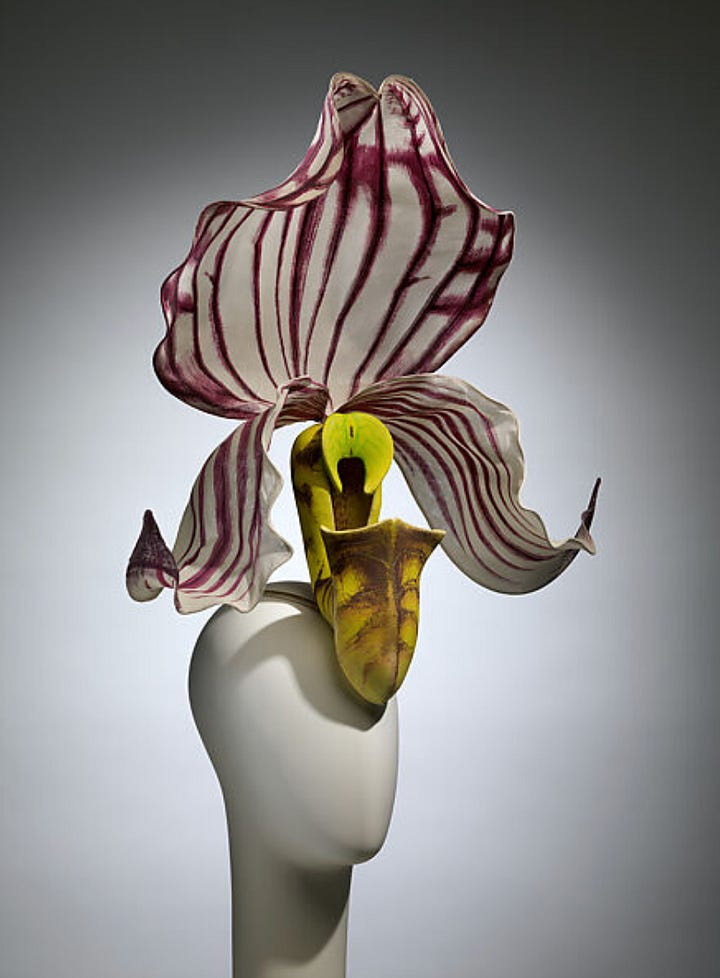
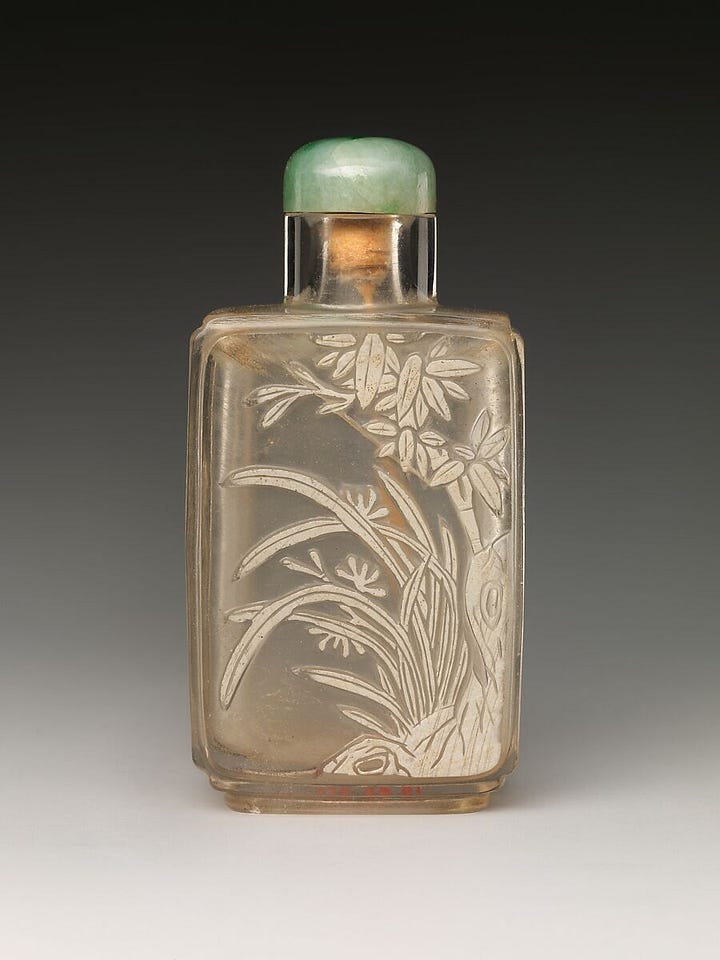
"Just as I wonder
whether it’s going to die,
the orchid blossoms
and I can’t explain why it
moves my heart, why such pleasure"
Stanza taken from The Orchid Flower by Sam Hamill, 2005Extra resources/reading
I’ve come across so much information about orchids that I couldn’t fit it all into this newsletter, but if you’re as captivated by them as I am, here’s a list of everything I read that didn’t make it in:
Orchid Trafficking and Species Decline. Illegal orchid trafficking is causing a global decline
The Flowering of the Strange Orchid by H.G Wells is a short story from 1894. It is a cautionary story, with the message being that people cannot always tame nature, and that, despite its tremendous beauty, the natural world is sometimes hazardous and fatal.
Ghost orchid rediscovered in UK for the first time since 2009. Britain’s rarest plant, a “holy grail” orchid, has been rediscovered for the first time since 2009, and scientists are now working to protect it from slugs, deer – and poachers.
Additionally, remember to read the post's footnotes!
Love,
Iris
Dodson, and Calaway H. “Orchid | Definition, Flowers, & Facts.” Encyclopedia Britannica, January 23, 2025. https://www.britannica.com/plant/orchid.
Kelleher, Katy, and Katy Kelleher. “The Ugly History of Beautiful Things: Orchids.” Longreads, January 20, 2023. https://longreads.com/2019/10/08/ugly-history-beautiful-things-orchids/.
“NOVA | Orchid Hunter | TV Program Description | PBS,” n.d. https://www.pbs.org/wgbh/nova/orchid/about.html.
“A Quote From the Orchid Thief,” n.d. https://www.goodreads.com/quotes/9795912-orchid-hunting-is-a-mortal-occupation-that-has-always-been.
Borrelli-Persson, Laird. “From Halston to Rodarte: Exploring Fashion’s Ongoing Love of Orchids.” Vogue, February 17, 2016. https://www.vogue.com/article/living-halston-yves-saint-laurent-rodarte?_sp=ef14819b-cf64-42af-a583-a71bc991e927.1741211786488.
IMDb. “Pride & Prejudice (2005) - Goofs - IMDb,” n.d. https://www.imdb.com/title/tt0414387/goofs/?item=gf2949900&ref_=ext_shr_lnk.
The Poetry Foundation. “Sylvia Plath: ‘Fever 103o,’” June 11, 2024. https://www.poetryfoundation.org/articles/68911/sylvia-plath-fever-103.
“Narcissa’s Last Orchid (X1982-357),” n.d. https://artmuseum.princeton.edu/collections/objects/14878.
The Metropolitan Museum of Art. “Paulding Farnham | Brooch | American | the Metropolitan Museum of Art,” n.d. https://www.metmuseum.org/art/collection/search/744107.


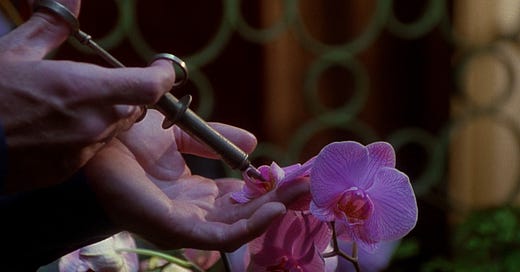













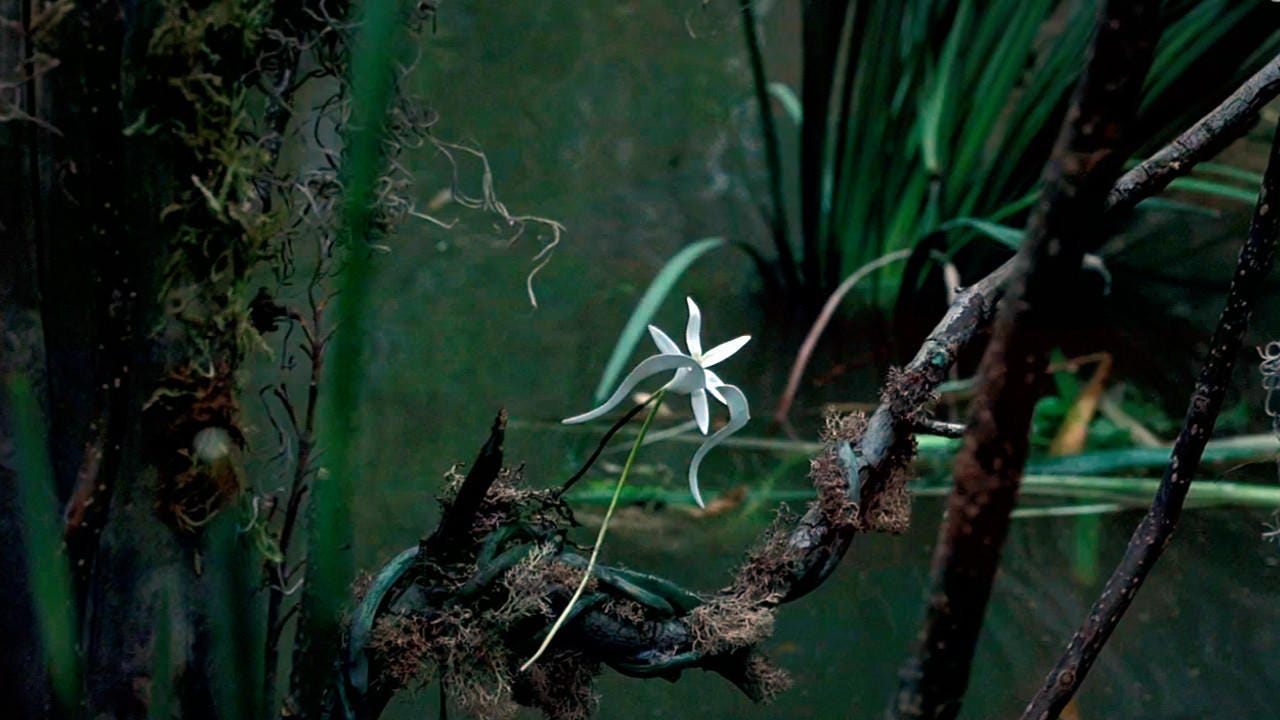
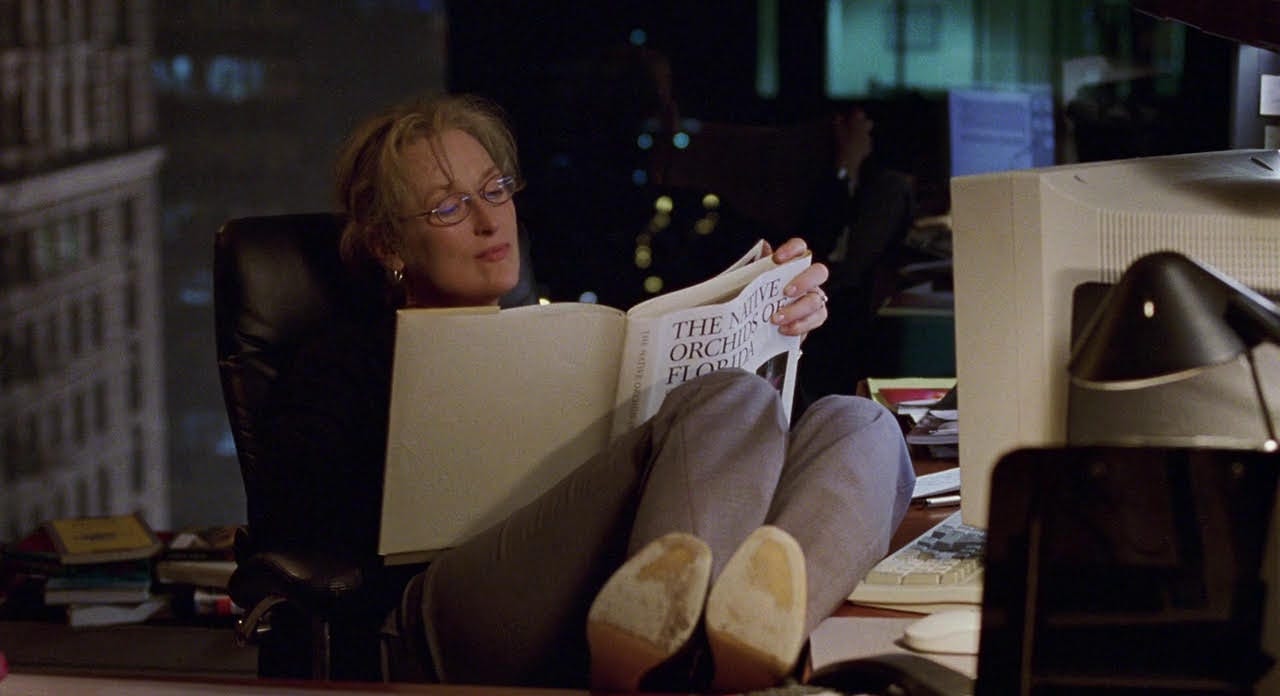


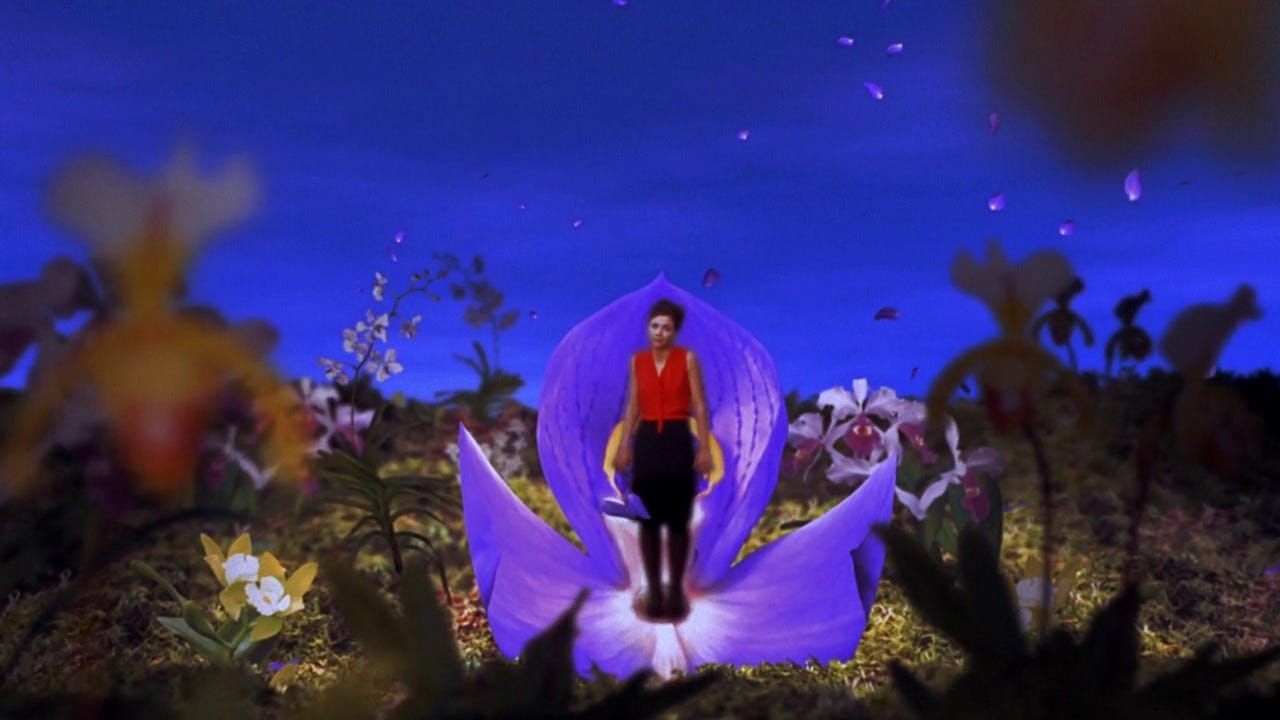
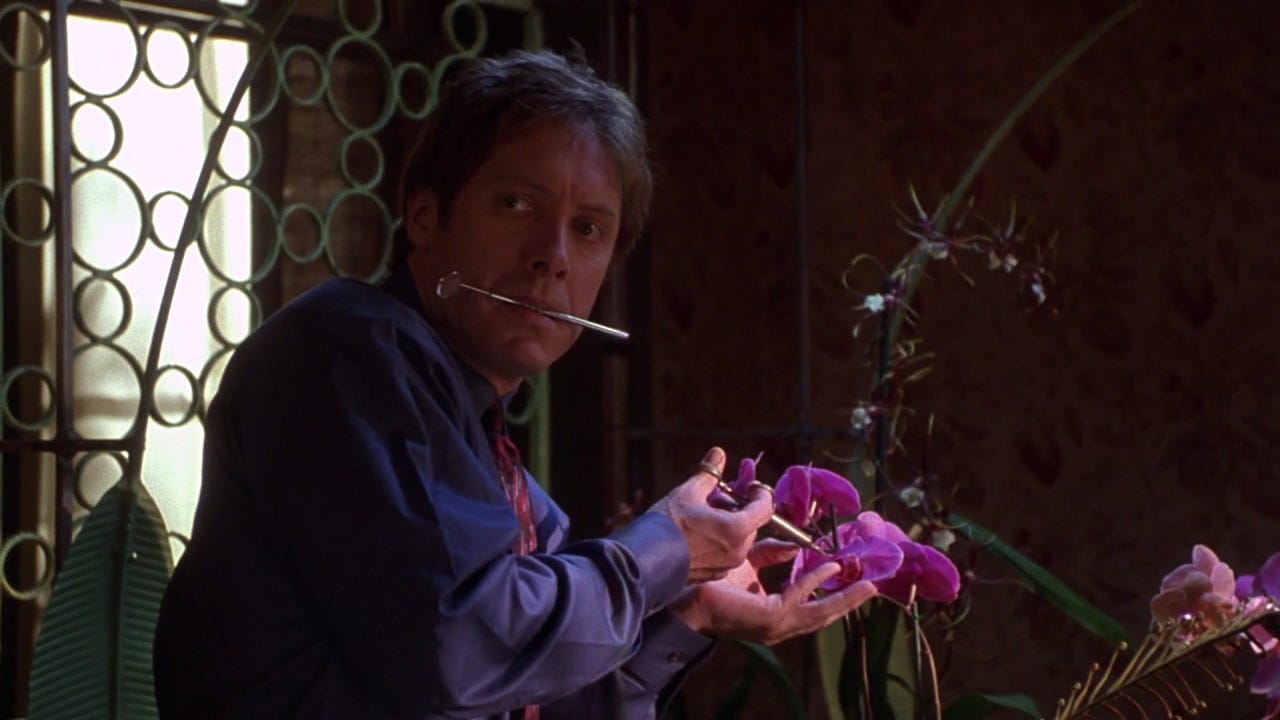





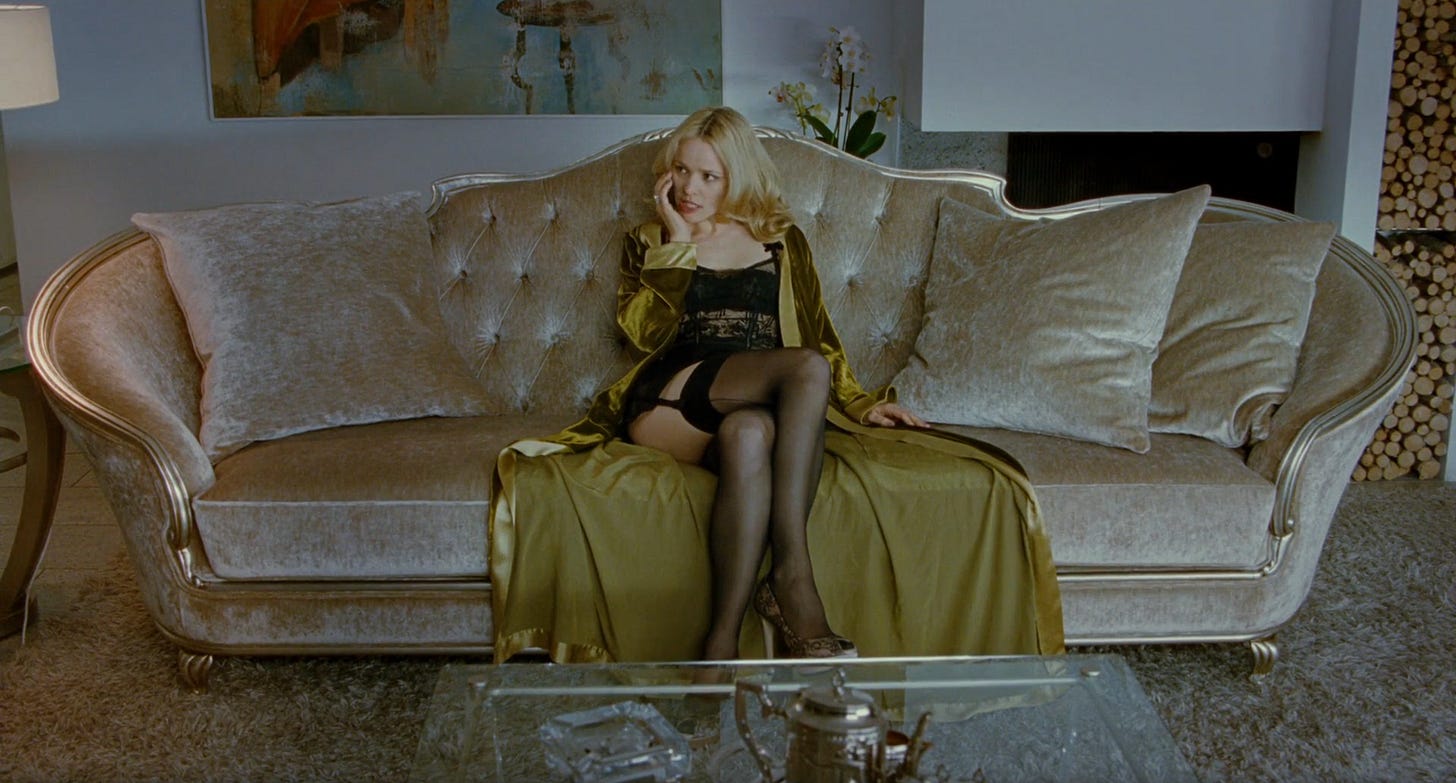


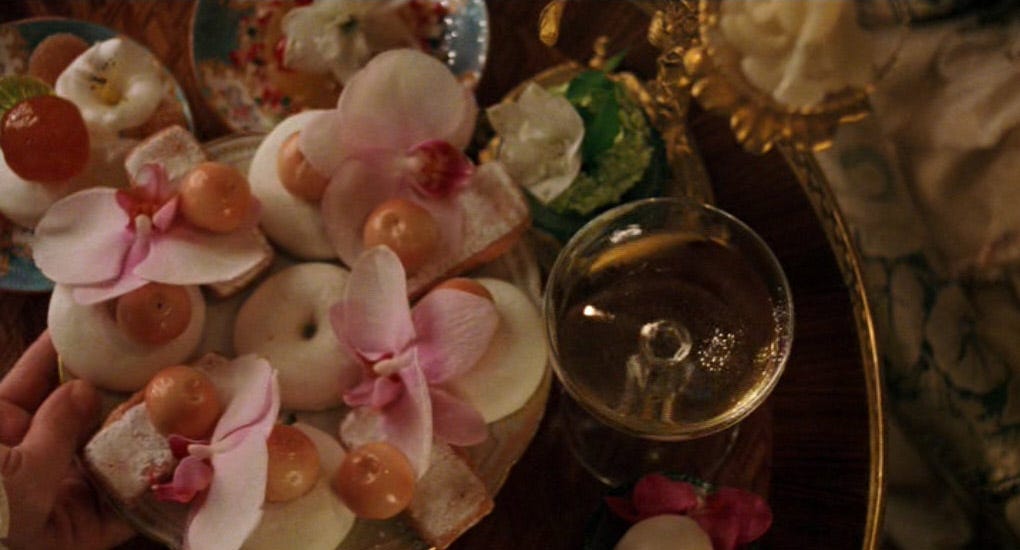






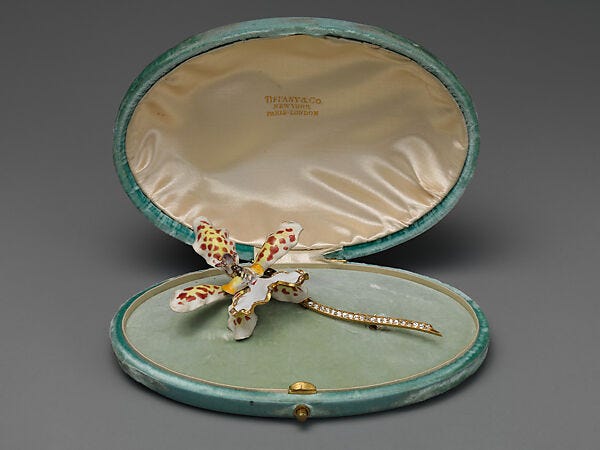




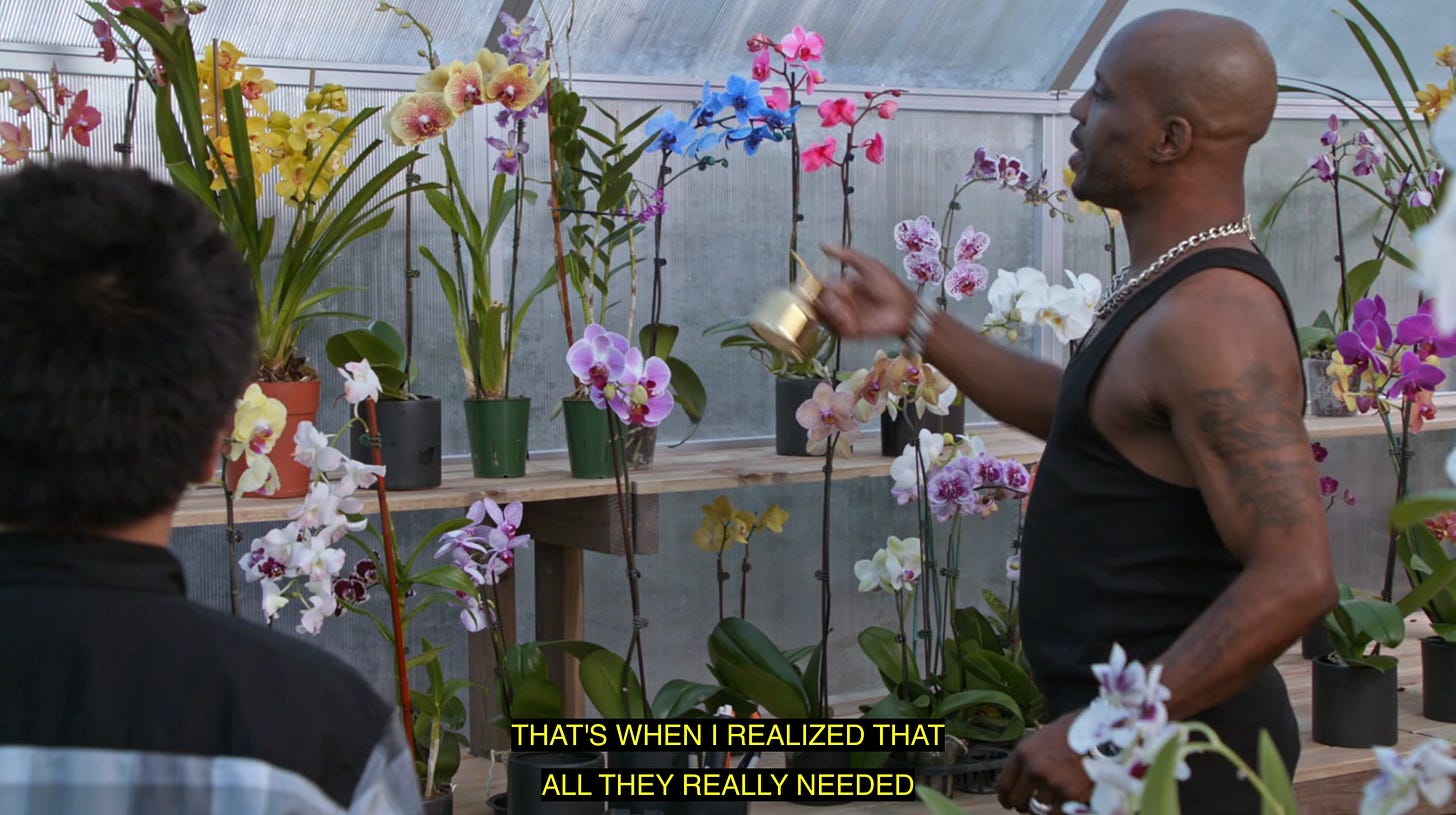


I love this! Made me think of the orchids in the second season of Twin Peaks. Secretary takes the cake, best orchid representation!!
I loved and learned a lot about orchids from reading this post. Thank you!